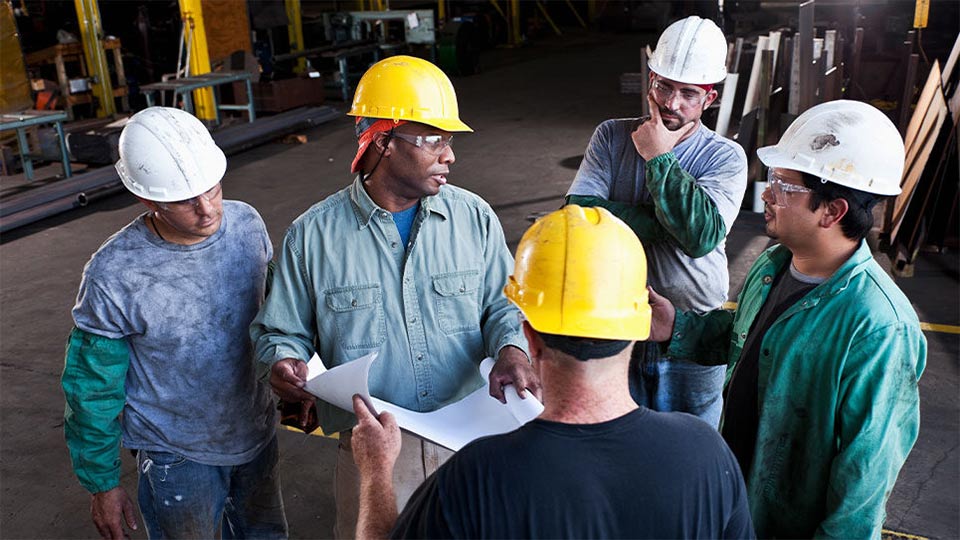What is Control of Work?
When contractors lack the proper qualifications, the results can be catastrophic, leading to serious accidents or fatalities. Control of Work is a system of safety management that acts as a gate for your workplace, mitigating risks by verifying the contractor’s documentation before they are allowed on-site. This proactive approach ensures that only those who are properly trained and equipped to safely carry out the task are granted access to the worksite.
In this way, Control of Work doesn’t just protect the contractors—it safeguards the entire workforce. By ensuring that all individuals working on-site have the proper qualifications and have followed the correct safety protocols, the system fosters a safer, more controlled work environment for everyone. This approach helps to prevent accidents, reduce operational risks, and maintain a culture of safety across the organization.
Although Control of Work should be applied to all employees completing hazardous tasks – even regular employees – it helps you confirm that all visitors, including temporary and contracted workers, entering your facility are properly vetted, trained and approved for the job they were hired for. With 4-5 times more accidents occurring involving contractors, Control of Work in relation to contractor management is especially important to get right.
What is a Control of Work Process?
Given that Control of Work is about verifying permits to work and contractor requirements, it’s easy to guess that a Control of Work process is the series of steps that do the verifying.
With a structured process in place, only contractors who meet specific safety, training, and qualification criteria are considered for a job. This means that an unqualified contractor will never make it through the selection process to begin with, significantly reducing the risk of accidents.
Developing an efficient process around Control of Work and compliance can seem pretty laborious — but without it, your organization is at serious risk. And luckily, there are software systems you can use to do this work for you, so that you can use your time engaging with your employees instead of tracking permits.
What is permit to work (PTW)? What is the purpose of a permit-to-work system?
A Permit to Work (PTW) is a formal document that outlines the specific requirements, safety protocols, and authorizations needed to carry out a particular task. It’s a key component of the Control of Work system, acting as a safeguard to ensure that any work—whether performed by contractors or fully-employed workers —is completed safely and in accordance with established safety standards like OSHA.
A PTW system is designed to manage and control the risks associated with high-risk activities by verifying that the appropriate precautions have been taken before work begins. It details the scope of the task, identifies the personnel responsible for performing the work, specifies the tools and personal protective equipment (PPE) required, and outlines the safety precautions that must be followed. Additionally, the permit provides official authorization to proceed, ensuring that all safety measures have been met.
While general permits cover a broad range of tasks, specialized permits are required for more specific or hazardous activities, such as hot work permits (for welding, brazing, or cutting) or working at height permits (for tasks conducted above ground level). Each type of permit is tailored to the specific risks associated with that work, ensuring that the proper safety measures are in place and that the work is conducted by qualified personnel under the right conditions.
How do Contractor Safety, Permit to Work and Control of Work all tie together?
Contractor Safety, Permit to Work, and Control of Work are closely linked elements in a comprehensive safety management system. Together, they ensure that hazardous tasks are performed only by qualified personnel under controlled and safe conditions.
Contractor Safety focuses on ensuring that contractors and temporary workers meet the necessary qualifications, training, and safety standards to perform their job safely.
Permit to Work (PTW) is a document that outlines the specific requirements for a given hazardous task, including the scope of work, required PPE, safety precautions, and task-specific authorizations.
Control of Work is the overarching safety system that integrates both contractor safety and the permit to work system. It acts as a gatekeeper, ensuring that no hazardous task is performed unless it has been properly vetted, authorized, and that the individuals assigned to the task are both qualified and equipped to handle the risk involved.
How can VelocityEHS help?
VelocityEHS Contractor Safety & Permit to Work is an integrated system that gives you the framework for an effective, efficient Control of Work process. Our cloud solution integrates Contractor Safety software and Permit to Work software to ensure requirements are met and contractors are properly vetted and trained before hazardous tasks are completed at your facility. It gives you the tools to protect your employees and reduce risk, while increasing visibility for stakeholders. Safe, productive, and efficient onsite work begins with the proper oversight and authorization of every person that comes through your gate.
